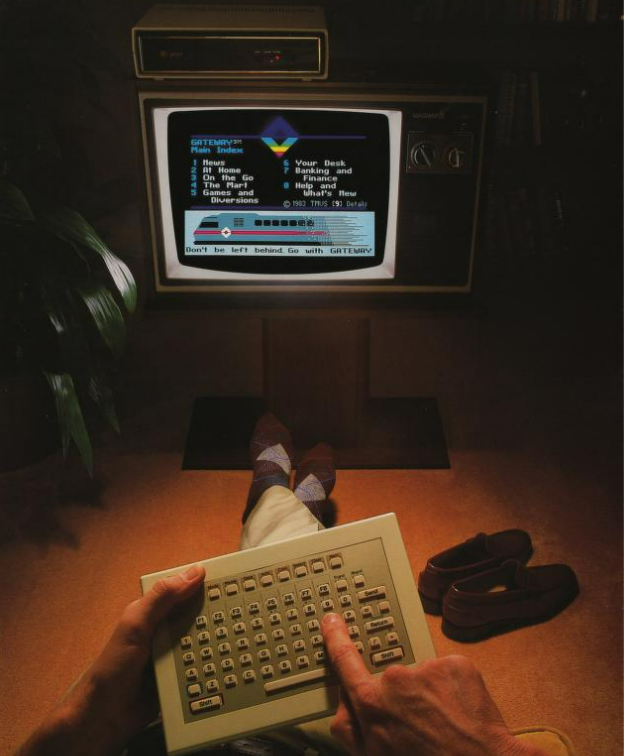
From the press kit to Gateway, an American videotex service by Times Mirror, 1984-1986.

This looks like a great keyboard for text graphics. There are dedicated keys for switching character sets, choosing and defining colours, manipulating fonts (DCRS), etc. Towards the top right, it looks like a dedicated set of keys for “pixeling” on a sub-char level?
This is the TBT-03 keyboard by Loewe, for the MCT 26 television. Circa 1984. It is used for the German videotex format BTX (and possibly other similar CEPT-standards like the Mupid?). Found here. Also see the TBT-02 keyboard

Book cover for Pedro Xisto’s Particulars, 1984. Features a poem by the author performed on a computer by Erthos Albino de Souza, according to this. via garadinervi
Paul Rickards uses the Silver Reed Colour Pengraph EB50 from 1984 as typewriter and plotter. It’s like vector graphics on a typewriter. Photos and video here.
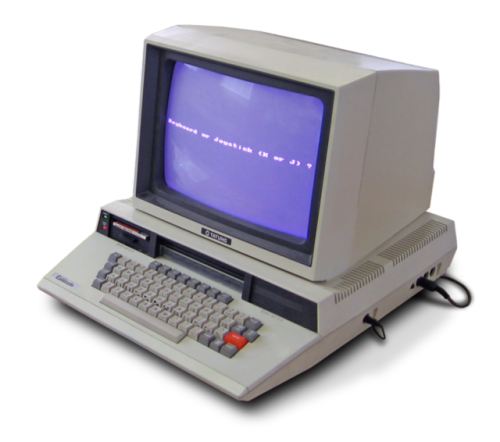
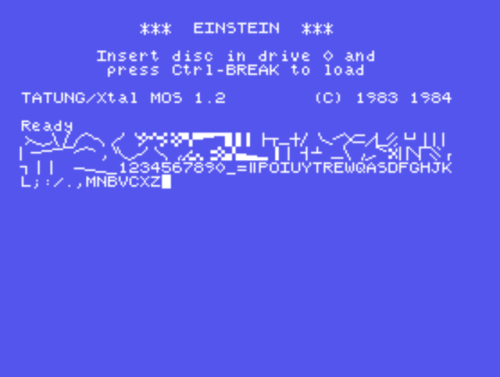
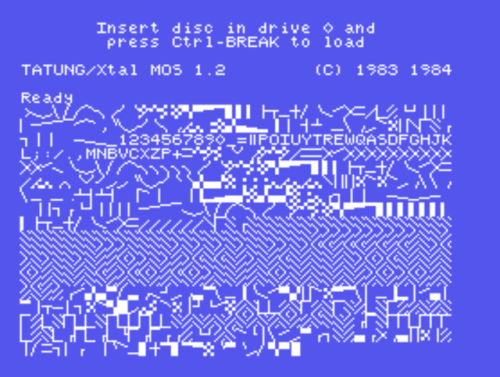
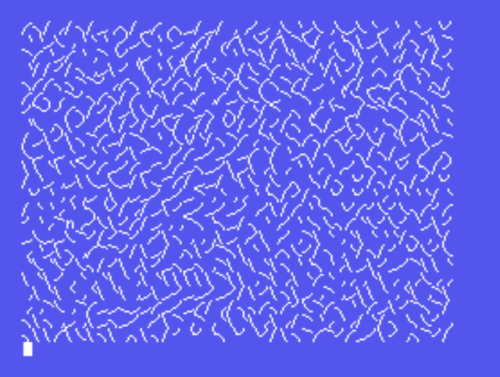
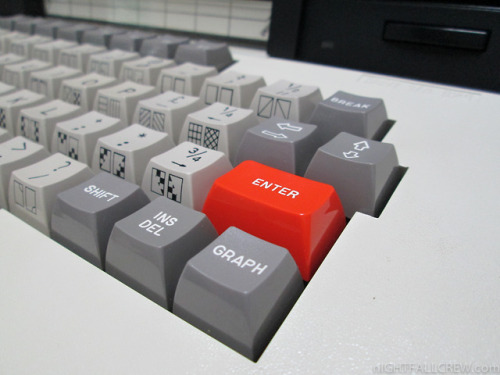
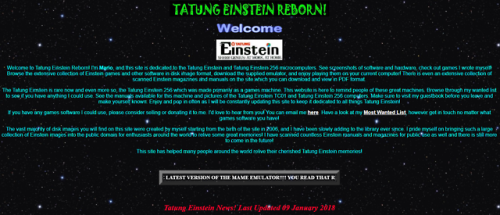
Tatung Einstein (1984) and its rather special character set. Also, don’t miss the active Geocities-style site tatungeinstein.co.uk. Photos from here and here.
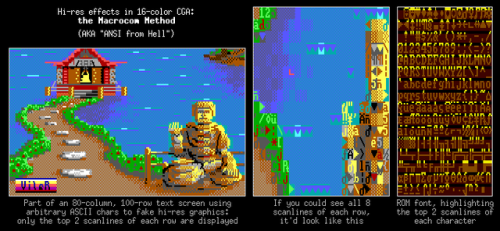
The Macrocom Method is a text mode trick for PC to use 16-colour hi-res graphics in CGA. The principle was to use only the top two pixel rows of each text character, and remove the rest. Image by VileR.
Macrocom was a company that first showed this trick in 1984 with the game ICON. Read more here. h/t: Rowan Lipkovits
From the book ’Computer Space Adventures’ by Paul Somerson and Stephen Manes (1984). Via auntiepixelante.com.
From the book ’Computer Space Adventures’ by Paul Somerson and Stephen Manes (1984). Via auntiepixelante.com.